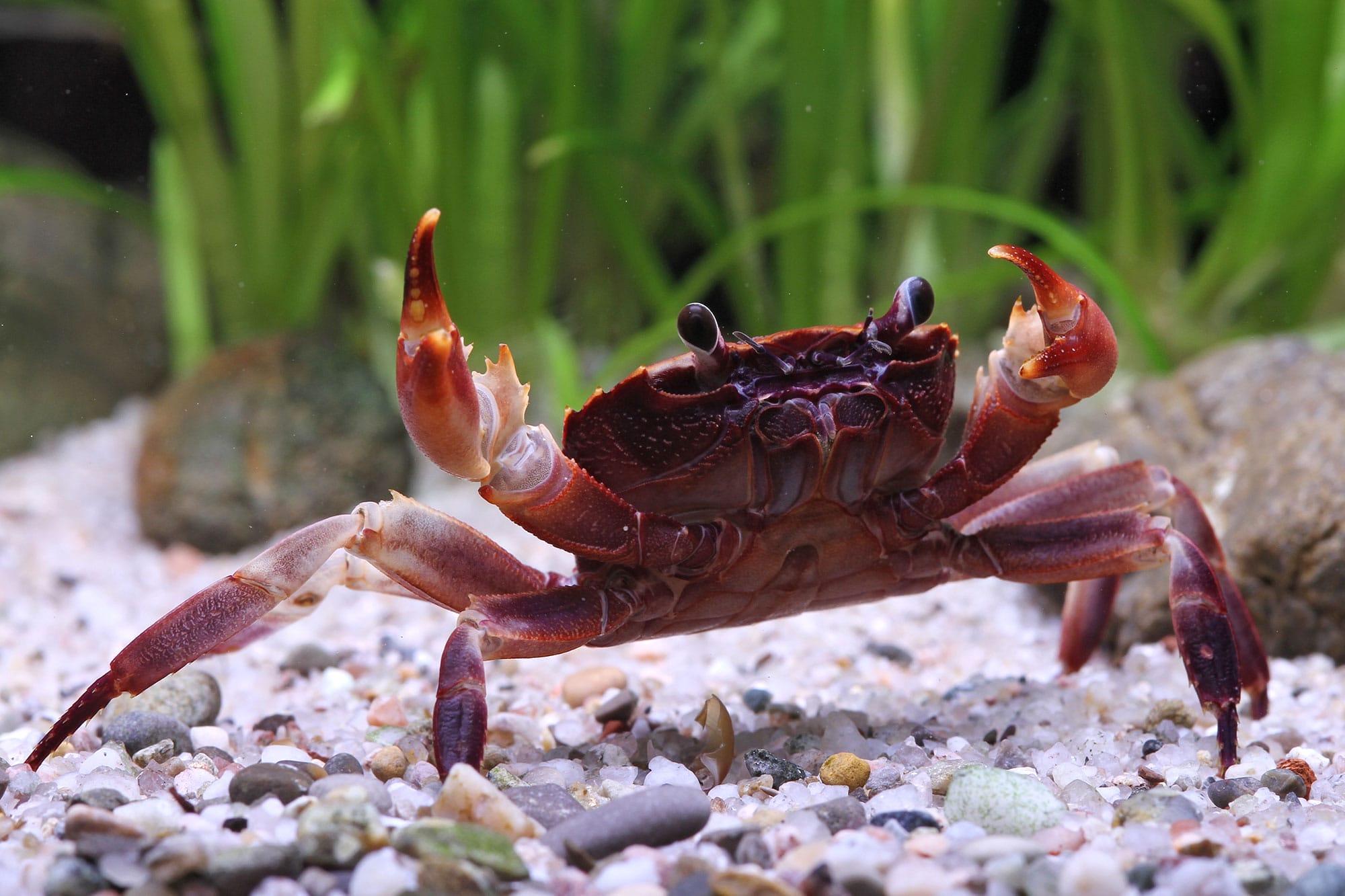
How to Breed Neocaridina Davidi Shrimp

Are you fascinated by the colorful and playful nature of Neocaridina Davidi shrimp? Breeding these lovely creatures can be an exciting experience for any aquarium enthusiast. However, it requires a great deal of knowledge and care to ensure successful breeding. In this blog post, we will take you through all the essential aspects of Neocaridina Davidi shrimp breeding. First and foremost, it’s important to create the right tank setup for Neocaridina Davidi shrimp breeding. This includes providing proper water parameters, temperature, and hiding places for the shrimp to feel comfortable and secure. Additionally, it’s crucial to maintain a clean environment and monitor water quality regularly to ensure the health and well-being of the shrimp. When setting up the tank for Neocaridina Davidi shrimp breeding, it’s also important to consider the ideal tank setup for tiger plecos, if you plan to keep them together in the same aquarium.
We will start with understanding the natural habitat, types & colors, and behavior of these shrimps. Then, we will guide you on how to set up a suitable aquarium for breeding.
We will also cover key aspects such as water quality, diet & nutrition, and common health issues that need to be considered while breeding them. So if you’re ready to take your love for Neocaridina Davidi shrimp to the next level, let’s dive in!
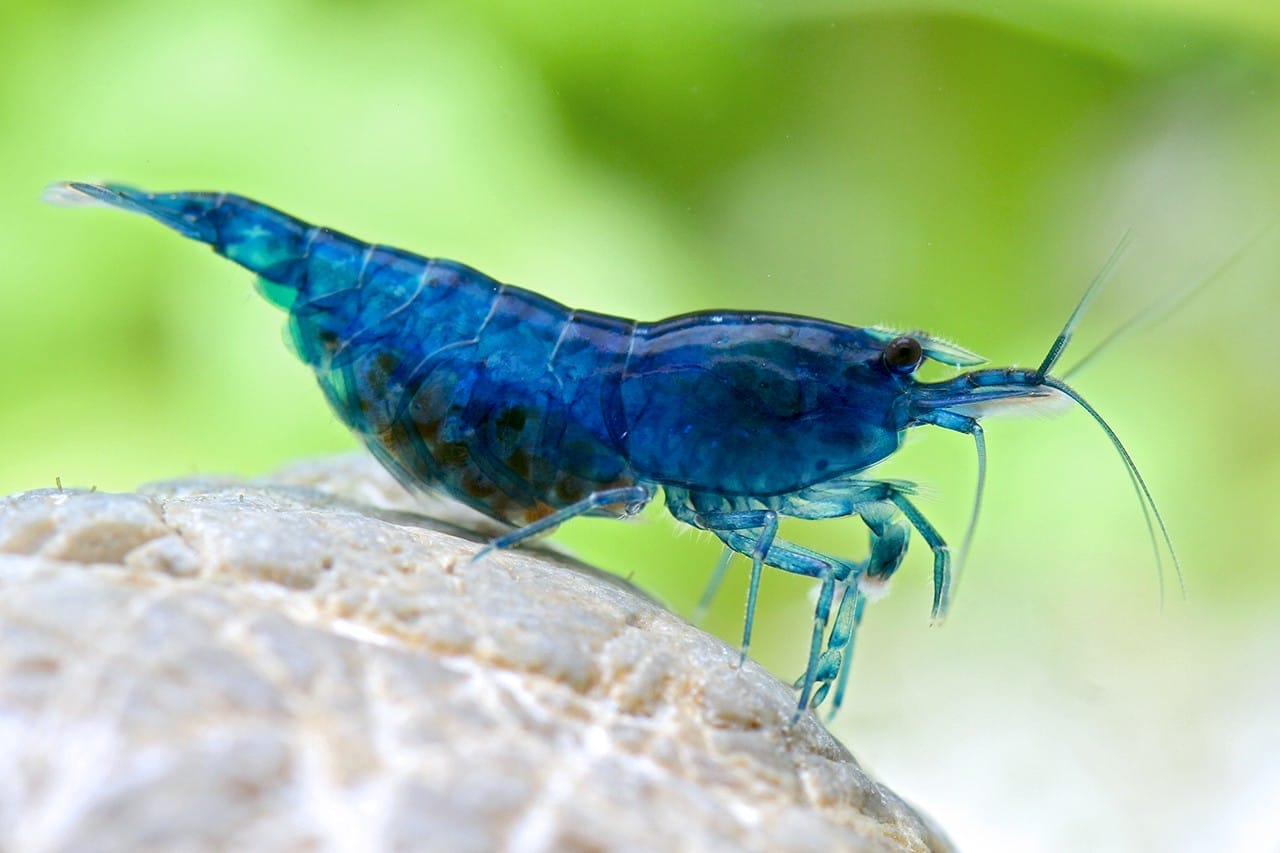
Understanding Neocaridina Davidi Shrimp
Neocaridina shrimp, known as cherry shrimp in the aquarium hobby, are beloved for their stunning appearance and ease of care. These freshwater crustaceans come in a range of color morphs due to selective breeding, including sakura, snowball, and red cherry shrimp.
Neocaridina shrimp reach sexual maturity at 6-8 weeks and females carry eggs for 3-4 weeks, making them a great option for beginners and experienced hobbyists alike.
Their peaceful nature also makes them suitable for community aquariums, where they can coexist with other non-aggressive species. Keeping neocaridina shrimp requires minimal maintenance as they do not require specialized equipment or water conditions. They thrive in a planted tank environment with plenty of hiding places and a varied diet consisting of algae, biofilm, and commercial shrimp food.
In addition to being easy to care for, neocaridina shrimp are also beneficial for maintaining a healthy aquarium ecosystem. They consume detritus and help maintain the balance of microorganisms in the tank. Overall, neocaridina shrimp are an excellent addition to any aquatic enthusiast’s collection.
The Natural Habitat of Neocaridina Davidi Shrimp
Native to freshwater rivers and streams in Taiwan and China, neocaridina shrimp flourish in their natural habitat with dense vegetation, rocky substrates covered in algae, and sandy bottoms. These shrimp prefer warmer water temperatures and stable water parameters while feeding on biofilm, algae, and decaying plant matter.
Calcium is a crucial element for successful molting as well. Fortunately, this ideal living environment can be replicated in aquariums to ensure the health and wellness of these mesmerizing crustaceans.
By providing them with a similar environment to their natural habitat, aquarium owners can enjoy watching these beautiful creatures thrive in their own homes.
Moreover, it is important to maintain water quality by performing regular water changes and monitoring temperature levels to keep neocaridina shrimp healthy and happy.
Types and Colors of Neocaridina Davidi Shrimp
Neocaridina shrimp are popular among aquarium enthusiasts as they come in a range of colors, including red cherry, blue velvet, and yellow shrimp. Selective breeding has led to the development of unique color morphs such as green jade and blue pearl shrimp. These species also exhibit distinct patterns like solid, spotted, or striped variations. The offspring’s color variations depend on genetics, water parameters, and diet.
Breeders can enhance or maintain specific color traits by selectively breeding neocaridina shrimp. The process involves careful selection of parent shrimps with desirable traits and providing them with optimal conditions for reproduction. With patience and dedication, breeders can produce stunning new color combinations that can add an extra level of interest to their aquariums.
It is important to note that maintaining the desired coloration in neocaridina shrimp requires consistent monitoring of water quality and diet. Changes in these factors can lead to changes in coloration over time. Therefore, it is crucial to provide the shrimp with a suitable environment that mimics their natural habitat to ensure their long-term health and vibrancy.
Behavior
Neocaridina shrimp are extremely active scavengers and explorers, displaying social behavior during feeding times. Female shrimp release pheromones to attract males for mating, while molting is necessary for their growth. These crustaceans require adequate hiding spots to exhibit relaxed behavior, which is crucial for their well-being.
In aquarium settings, the natural behavior of neocaridina heteropoda reflects their adaptability and ability to interact with other species, making them an excellent choice for beginners and hobbyists.
They are easy to care for and come in a wide range of colors, adding aesthetic value to any aquarium. Additionally, they play an important role in maintaining a healthy ecosystem by cleaning up leftover food and algae.
With proper care, these shrimp can live up to two years and provide endless entertainment with their active scavenging and mating behaviors.
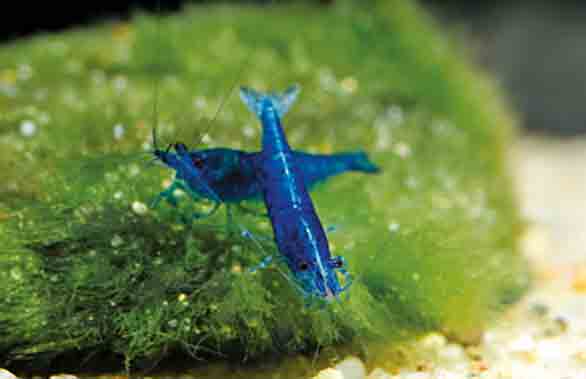
Setting Up a Neocaridina Davidi Shrimp Aquarium
Creating an optimal environment for neocaridina shrimp involves setting up a mature aquarium with live plants like java moss. The selection of the right substrate, such as gravel or sand, is crucial for burrowing and reproduction.
Adequate filtration, like a sponge filter, is essential for maintaining water quality without harming baby shrimp. Adding snails, like otocinclus catfish, can assist in algae control and biofilm management. Providing mosses, plants, and hiding places allows neocaridina shrimp to thrive.
Key Requirements for a Shrimp Aquarium
When setting up a shrimp tank, it is important to ensure that it is spacious enough for the neocaridina shrimp to move around and breed. A tank size of 5 gallons or more is recommended for optimal growth and development.
Maintaining stable water parameters, including pH, ammonia, nitrite, and nitrate levels, is crucial for the health of your shrimp. Regular water changes and a mature aquarium can help establish a stable biological balance.
Monitoring water hardness by measuring general hardness (GH) and carbonate hardness (KH) is also essential for the well-being of your shrimp. Ensuring a healthy biofilm and algae growth within the aquarium supports the natural diet of your shrimp.
Apart from these guidelines, it’s important to make sure that the tank has sufficient filtration to keep the water clean and clear of debris. Adding live plants can also help maintain water quality by removing harmful toxins from the water through photosynthesis.
It’s important to avoid overfeeding your shrimp as this can cause pollution in the tank and lead to health problems. Overall, taking good care of your neocaridina shrimp requires attention to detail and regular monitoring of tank conditions.
The Importance of Water Quality
Neocaridina shrimp require a specific environment to thrive, and maintaining optimal water quality is critical for their well-being and reproduction. These aquarium crustaceans are highly sensitive to their surroundings, and it is crucial to ensure that they live in clean, well-oxygenated water. Keeping ammonia and nitrite levels at zero, with nitrates below 20 ppm, is essential for their health.
To promote shrimp activity and successful breeding, it is also necessary to maintain a stable temperature of 72-78°F and a pH level between 6.5-7.5. Using a reliable water conditioner that eliminates chlorine, chloramine, and heavy metals is necessary for providing a suitable habitat for these delicate creatures.
It’s important to note that overfeeding can lead to an accumulation of waste in the tank which can adversely affect the water quality. Therefore, feeding neocaridina shrimp sparingly with high-quality food can help prevent this problem.
Additionally, regular water changes (at least once every two weeks) can help maintain optimal water conditions by removing any harmful pollutants or debris from the tank. Proper maintenance of the aquarium filter is also crucial as it removes organic waste from the water column and helps maintain good water quality.
In summary, maintaining ideal conditions such as appropriate temperature range, pH level, zero ammonia/nitrite levels and using a reliable water conditioner while also limiting feeding frequency is vital for ensuring your neocaridina shrimp remain healthy and happy in their aquatic environment.
Choosing Suitable Tankmates for Your Shrimp
While creating a community tank for neocaridina shrimp, it is essential to choose peaceful nano fish like chili rasboras. Avoid aggressive or predatory fish that may prey on the shrimp.
Small snails such as Malaysian trumpet or nerite snails can coexist with shrimp harmoniously. An adequate amount of hiding spots and dense vegetation improves the environment for both the shrimp and their tankmates.
Tank dynamics and behavior observation are crucial in determining compatibility with neocaridina shrimp. Additionally, maintaining water parameters such as pH, temperature, and hardness at optimal levels is important to ensure the health and well-being of all inhabitants in the tank.
It is also recommended to regularly monitor water quality by conducting water tests to prevent any fluctuations that may cause stress or harm to the aquatic life in the tank. With proper care and attention, a community tank with neocaridina shrimp can thrive with a variety of aquatic species coexisting peacefully.
Diet and Nutrition of Neocaridina Davidi Shrimp
The Neocaridina shrimp have an omnivorous diet and are known to consume various types of food, including algae, biofilm, and decaying plant matter. Providing a varied diet that includes blanched vegetables, algae wafers, and shrimp-specific supplements can meet their nutritional requirements. Foods rich in calcium such as cuttlebone are also essential for molting and exoskeleton development.
However, overfeeding can lead to water quality issues and obesity among the Neocaridina shrimp. Thus, it is important to monitor their feeding behavior and adjust the frequency of feeding according to their consumption patterns.
A balanced diet is vital for the well-being of these shrimp, so care should be taken to provide them with adequate nutrition while avoiding overfeeding. Additionally, ensuring that the water parameters are suitable for the species is equally important as it affects their overall health and longevity.
How Often Should You Feed Your Shrimp?
To maintain a balanced diet for neocaridina shrimp, it is recommended to feed them small portions 2-3 times a week. It’s important to monitor their feeding response and ensure that all food is consumed within a few hours to avoid overfeeding.
Adjusting the feeding schedule based on the presence of natural food sources such as biofilm and algae in the tank can also help prevent overfeeding. Providing a varied diet, including vegetables, pellets, and frozen foods, can help ensure that the shrimp get all the nutrients they need for optimal health. Additionally, avoiding overfeeding can prevent water quality issues and maintain a healthy aquatic environment for your shrimp.
The Breeding Process Explained
To successfully breed neocaridina shrimp, it is essential to understand their sexual maturity. Optimal water parameters such as temperature and pH are also crucial factors for breeding success.
Selective breeding has led to a range of color variations in neocaridina, from red cherry to blue velvet. A mature aquarium that includes live plants and biofilm can also promote successful breeding.
In addition to these factors, water quality should be closely monitored, with attention given to ammonia and nitrate levels. Consistent monitoring of these parameters is vital for maintaining a healthy environment for neocaridina shrimp.
It is important to note that breeding success can depend on several factors, including the age of the shrimp and the presence of male and female counterparts. By carefully managing these variables and providing optimal conditions for breeding, hobbyists can successfully propagate their neocaridina shrimp populations.
Common Health Issues and Their Solutions
Saddle issues in neocaridina shrimp can be indicative of breeding or molting problems and should be addressed promptly. Maintaining optimal water parameters, such as appropriate calcium levels, is critical to prevent exoskeleton issues that may result in saddle problems.
Additionally, resolving reproductive challenges with neocaridina shrimp often requires adjusting tank conditions. To tackle potential health issues, it is important to have a comprehensive understanding of biofilm in neocaridina shrimp and pay close attention to pheromones for mating behavior and overall health. Regular water changes and proper diet can also aid in maintaining the health of these fascinating creatures.
Regular Care and Maintenance Tips
To ensure the health and well-being of neocaridina shrimp, it is important to maintain stable aquatic parameters, such as kh and gh. These shrimp species thrive in aquariums with abundant plants like java moss. Sponge filtration can also promote a healthy environment for neocaridina shrimp.
Monitoring breeding and reproduction patterns is vital as they indicate the tank’s health and breeding success. Regular water changes and gravel vacuuming are also essential for neocaridina shrimp tank maintenance.By taking these measures, hobbyists can support their neocaridina heteropoda and other aquarium shrimp in their endeavors.
Additionally, it is crucial to provide the right conditions for the growth of biofilm, which serves as a natural food source for neocaridina shrimp. It is also essential to avoid overfeeding the shrimp as this can lead to poor water quality and increased levels of ammonia or nitrate. By following these guidelines, enthusiasts can enjoy a thriving colony of neocaridina shrimp in their aquariums.
Tank mates
Choosing the right tank mates for neocaridina shrimp is crucial for their well-being and breeding success. It is essential to consider compatibility when selecting tank mates, avoiding aggressive species that may harm or stress out the shrimp. Two suitable options are chili rasboras and otocinclus catfish.
Another factor to keep in mind when choosing tank mates is the influence of neocaridina shrimp’s biofilm consumption on other species. These shrimp consume biofilms, which are thin layers of microorganisms found on surfaces in the aquarium. This behavior can affect the choice of tank mates as some species may compete with the shrimp for this food source.
Selecting compatible nano fish or freshwater shrimp species can enhance the dynamics of the neocaridina shrimp tank. For instance, cherry barbs, ember tetras, and pygmy corydoras are also suitable choices. Additionally, introducing live plants to the aquarium can provide hiding places and add visual interest to your setup while creating a more natural environment for all inhabitants. When choosing tank mates, it is important to research their compatibility thoroughly to ensure a healthy and harmonious aquatic community.
Water quality
Maintaining optimal water parameters is crucial for the health and well-being of neocaridina shrimp. These sensitive creatures require specific pH and temperature levels to survive, making it essential to monitor and adjust these parameters regularly. Keeping ammonia levels in check is also vital as even slight variations can have a significant impact on the shrimp’s health.
Regularly monitoring molt cycles can provide insights into the overall condition of the tank and help identify any issues with water quality or conditions. Effective water filtration and biofilm management are also crucial for maintaining a healthy environment for neocaridina shrimp.
Providing sufficient sources of calcium is an important aspect of supporting healthy molting in these shrimp, leading to better overall water quality. It is therefore important to maintain a balanced diet that provides all the necessary nutrients, including calcium. By following these guidelines, you can ensure that your neocaridina shrimp thrive in their environment and remain healthy for years to come.
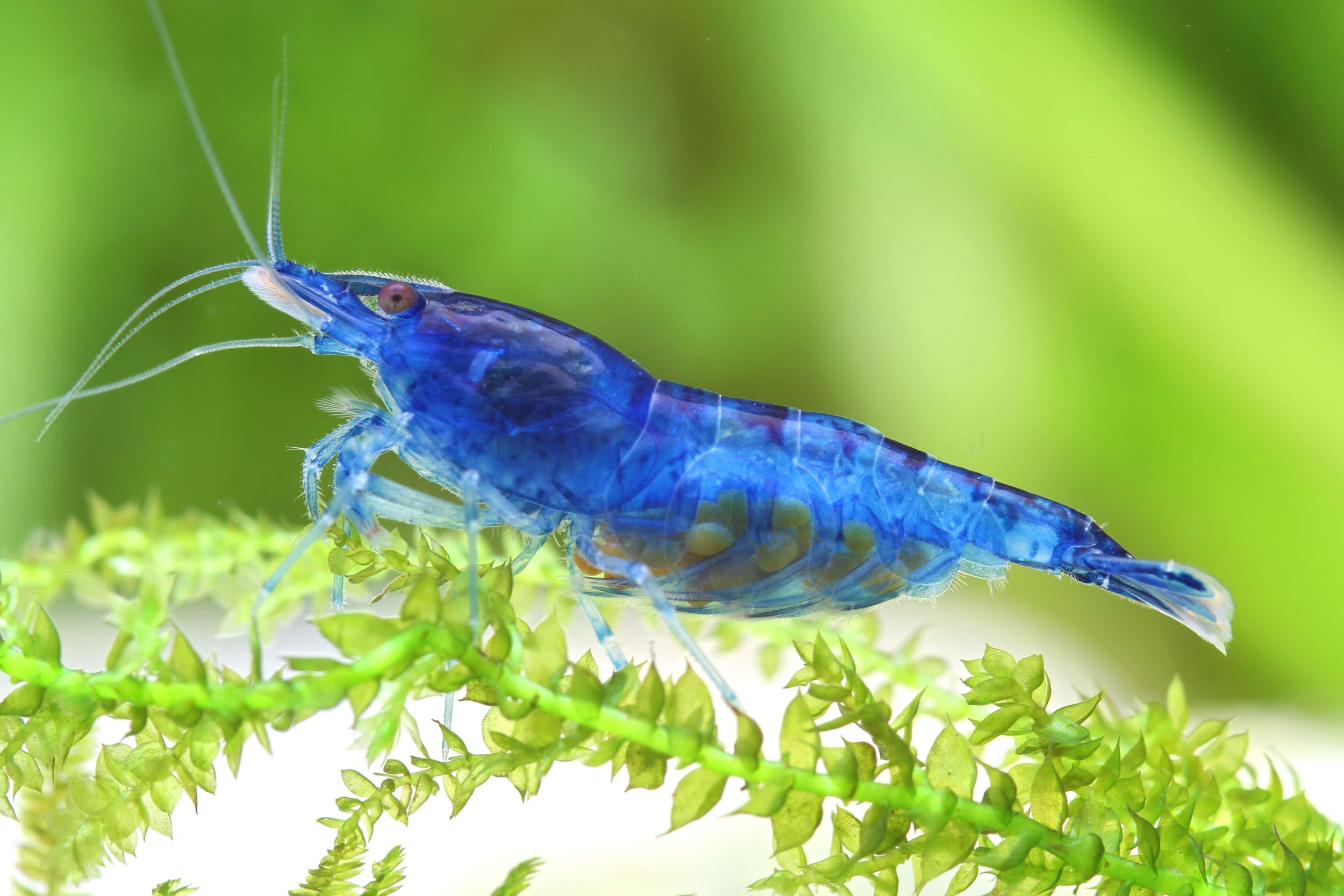
Frequently Asked Questions
What are the ideal water parameters for breeding Neocaridina Davidi shrimp?
The ideal water parameters for breeding Neocaridina Davidi shrimp include a temperature range of 72-78°F (22-26°C), pH level around 7.0 (tolerating 6.5-8.0), and hardness levels between 4 and 8 dGH. Maintaining a clean tank with stable water conditions is crucial for successful breeding.
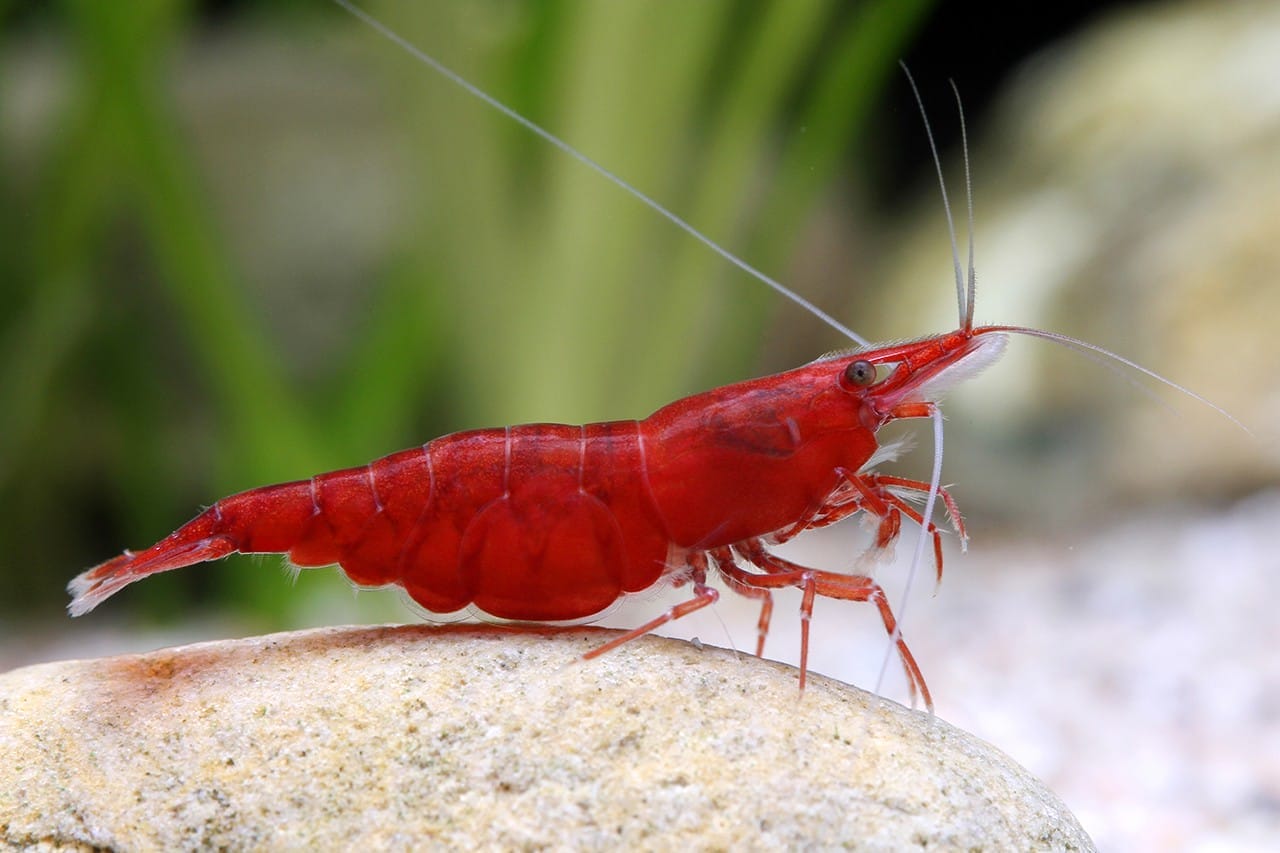
Conclusion
In conclusion, breeding Neocaridina Davidi shrimp requires careful consideration and attention to detail. Understanding their natural habitat, behavior, and specific requirements for a shrimp aquarium is crucial for their well-being and successful breeding.
Maintaining proper water quality, providing a balanced diet, and ensuring suitable tankmates are all important factors in promoting a healthy breeding environment.
Regular care and maintenance, along with addressing common health issues, will contribute to the overall success of your shrimp breeding endeavors. With dedication and proper care, you can enjoy the beauty and vibrancy of these fascinating creatures in your own aquarium. Happy shrimp breeding!





